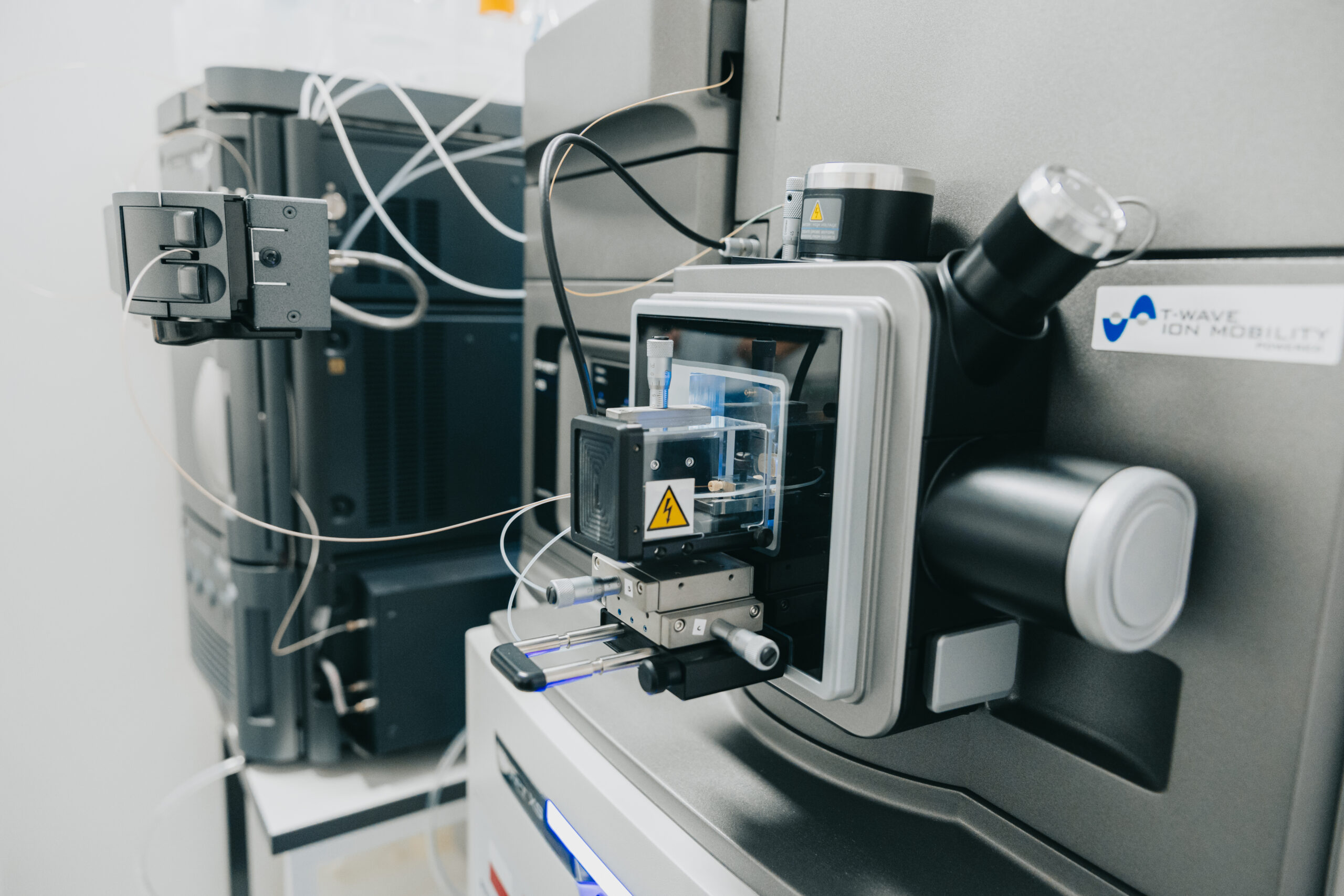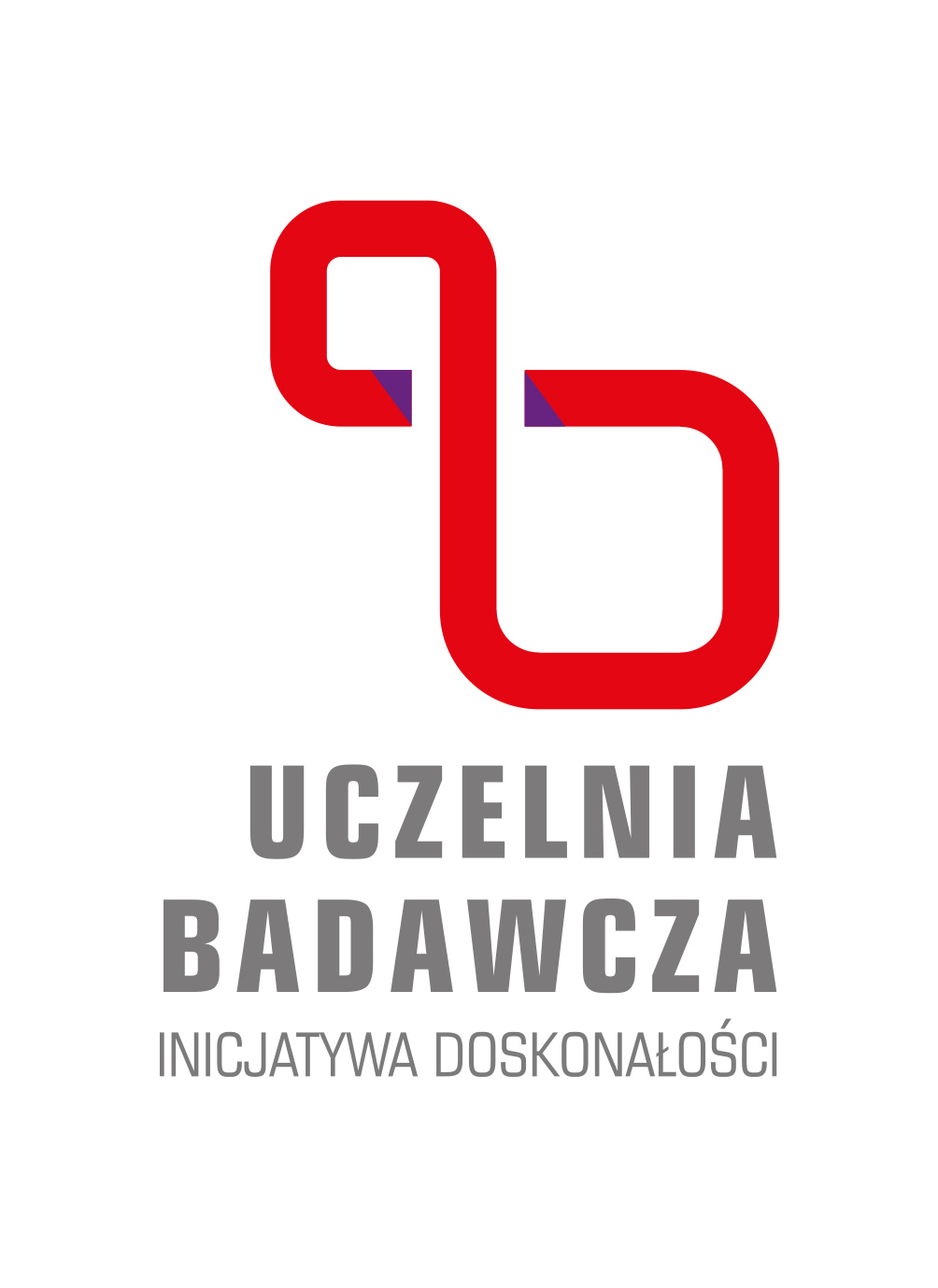Mass Spectrometry Laboratory
Leader:
dr Michał Tracz 
Scientific advisor:
prof. dr hab. Artur Krężel 
Laboratory is oriented towards providing a complex scientific service related to protein mass spectrometry and proteomics for research projects carried out at the Faculty of Biotechnology. Scientific cooperation with outside parties is also possible.
Analysis inquiries and consultation please contact: michal.tracz2@uwr.edu.pl
Equipment

Acquity NanoUPLC M-Class + Synapt XS HDMS
The purchase of the LC-MS equipment was financially supported by the Research Equipment Fund (FAB) of the “Excellence Initiative — Research University” (IDUB) program for the University of Wroclaw.
Analysis scope
Protein analyses:
- intact mass analysis of a protein or a peptide (RP-LC)
- pure protein modification or PTM analysis (CID or ETD fragmentation)
- targeted protein/peptide quantification from biological matrices (ToF-MRM)
- protein or peptide hydrogen-deuterium exchange structural analyses (HDX)
- native protein MS
Proteomics:
- protein identification from biological matrices, PAGE gels (including SDS-PAGE) or after CoIP
- protein abundance estimation from biological matrices, PAGE gels (including SDS-PAGE) or after CoIP (Shot-gun proteomics, BioID etc.)
- protein PTM analyses from biological matrices (acetyl-proteomics, ubiquitinomics, phosphoproteomics etc.)
Non-protein analyses:
- compound’s mass analysis + isotopic profile (RP-LC)
- compound’s MS/MS spectra analysis (CID fragmentation)
- targeted compound quantification from biological matrices (ToF-MRM)
Expertise
Publications supported by the Laboratory
- Biarsenical-based fluorescent labeling of metallothioneins as a method for ultrasensitive quantification of poly-Cys targets (2025)
- Deciphering the safeguarding role of cysteine residues in p53 against H2O2-induced oxidation using high-resolution native mass spectrometry (2025)
- Combining Native Mass Spectrometry and Proteomics to Differentiate and Map the Metalloform Landscape in Metallothioneins (2024)
- Defining the role of Hmu and Hus systems in Porphyromonas gingivalis heme and iron homeostasis and virulence (2024)
- Engineered intrinsically fluorescent galectin-8 variants with altered valency, ligand recognition and biological activity (2024)
- The activity of CobB1 protein deacetylase contributes to nucleoid compaction in Streptomyces venezuelae spores by increasing HupS affinity for DNA (2024)
List of scientific advisor’s selected research works encompassing protein MS
- Structural Characterization of Cu(I)/Zn(II)-metallothionein-3 by Ion Mobility Mass Spectrometry and Top-Down Mass Spectrometry (2023)
- Ion mobility mass spectrometry and molecular dynamics simulations unravel the conformational stability of zinc metallothionein-2 species (2023)
- An Integrated Mass Spectrometry and Molecular Dynamics Simulations Approach Reveals the Spatial Organization Impact of Metal-Binding Sites on the Stability of Metal-Depleted Metallothionein-2 Species (2021)
- Mass Spectrometry-Based Structural Analysis of Cysteine-Rich Metal-Binding Sites in Proteins with MetaOdysseus R Software (2020)
- Metal- and Affinity-Specific Dual Labeling of Cysteine-Rich Proteins for Identification of Metal-Binding Sites (2020)
- Crosstalk of the structural and zinc buffering properties of mammalian metallothionein-2 (2018)










